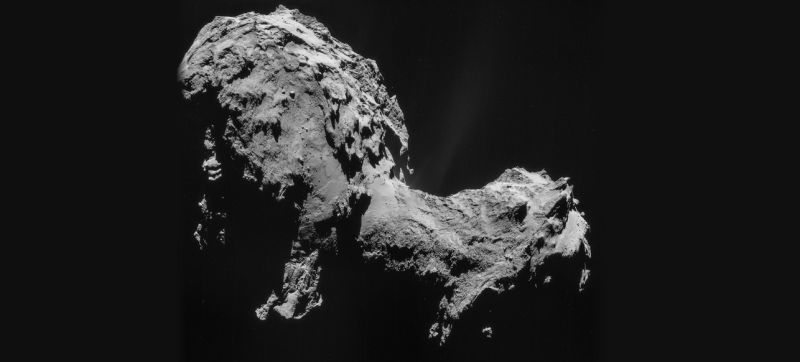
A new study has shown that Comet 67P/Churyumov-Gerasimenko has frozen water just beneath its surface, which occasionally becomes exposed as a result of geological activity.
The news shouldn’t come as much of a surprise: we already knew that there was water on the comet. A previous analysis of 67P showed that the cloud of gas surrounding the comet, known as the coma, contained water vapor, carbon dioxide and carbon monoxide, and microscopic ice grains had been observed on the surface, a result of water vapor being ejected from inside the comet.
The new study, carried out by researchers at the National Institute for Astrophysics in Rome and published in Nature, used data from Rosetta’s infrared detector, called VIRTIS, to study the face of the comet. The team found grains of ice around a sixteenth-of-an-inch in size that had been exposed by fallen cliff faces. It’s currently unclear how they might have formed.
The researchers hope that by studying the different forms of water present on and around the comet they can form a better understanding of its history.
[Nature]
Sponsored
Image by NASA
